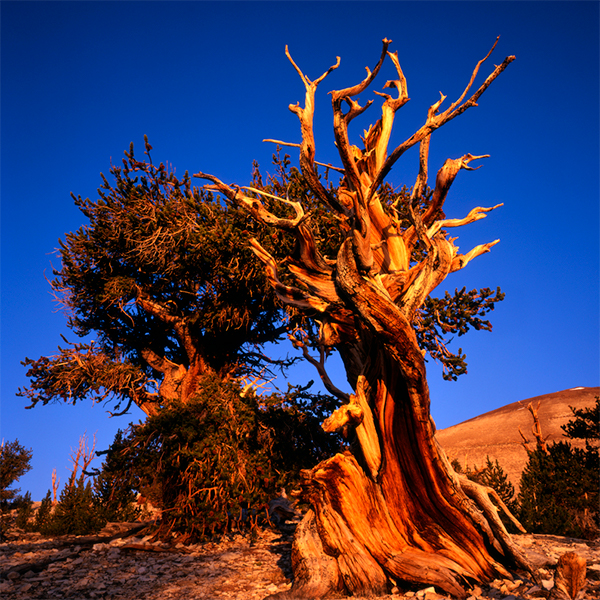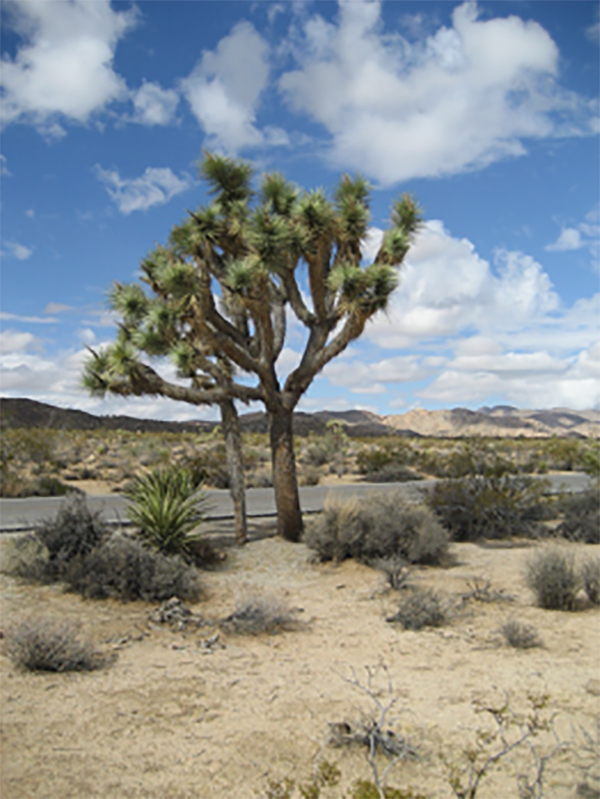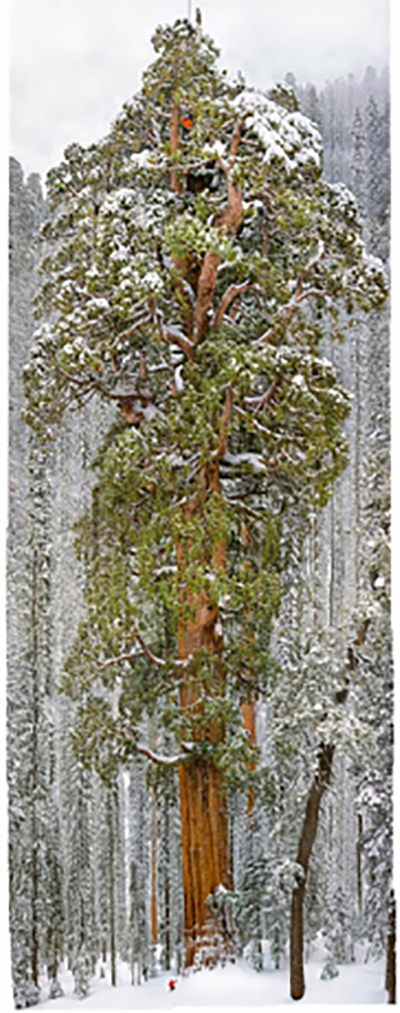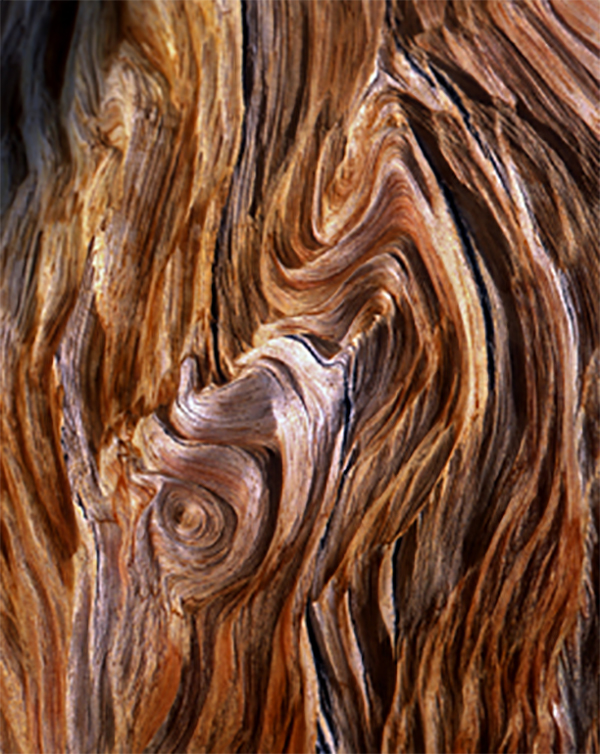“Poems are made by fools like me. But only God can make a tree.” 1
JoYce Kilmer
Even though Darwin investigated the Plant Kingdom, his conjectured transitional chain of organic life seems to have given primary attention to the Animal Kingdom. While media hype touts dinosaurs-to-birds and molecule-to-man scenarios, evolution’s grand scheme gives short shrift to the origin of plants.

Although Darwin claimed plants and animals descended from “one primordial form,” his imaginary “Tree of Life,” paid little attention to showing connection with trees, bushes, flowers and grasses.
“Analogy would lead me…to the belief that all animals and plants have descended from some one prototype…I should infer from analogy that probably all the organic beings which have ever lived on this earth descended from some one primordial form, into which life was first breathed.” 2
Taking the guru at his word, we are to believe a giant redwood or a Joshua tree descended from the same ancestor as a monarch butterfly?

Despite Darwin’s imagining that plants and animals descended from the same “primordial forem,” there’s no scientific evidence California’s Joshua Tree shares common ancestry with an eagle or an elephant.
The chance hypothesis buys into the abstraction that the first living cell managed to create itself from non-living matter. Darwin took another leap of faith, promoting the impossible-to-prove thought that all plant and animal life evolved from the same make-believe, common ancestor.
Charles Darwin, the most oft-quoted proponent of the chance hypothesis since 1859, pledged allegiance to the myth that trees and humans share descent from “one primordial form” —an unproved, unprovable speculation. No stranger to the Plant Kingdom and confronted with a genetic “mystery,” he struggled to find a niche for trees and shrubs in his grand scheme.

“The President” is a 3200 year-old giant Sequoia growing tall a millennium before the birth of Christ. By size comparison, note the red-coated human standing near the 27-foot diameter base
The naturalist spent long hours with his botanist son researching plants, but his 1859 Origin of Species, featuring “descent with modification,” fails to identify the precise genetic junction where strawberry plants and giant sequoias allegedly deviated from hummingbirds and elephants after having split from that original, self-created “primordial form” and redesigned themselves by “variation and natural selection.”

The three workmen suspended from the branches of the 270-foot tall “President” are virtually invisible alongside the majestic giant.
Rote recitation of lofty-sounding words and phrases prove nothing.
If Darwin’s rash conjecture is to be believed, just where are the mega-millions of transitional life forms that needed to lend credibility to the thesis that trees and animals came from that “one primordial form?”
Where’s the genetic trail confirming a bristlecone pine and a monarch butterfly share a common ancestor? Where’s the fossil intermediate? And what did he, she, or it, look like?
Even open-ended deep time years of “slight successive variations” are hopelessly inadequate to account for this gaping chasm of genetic discontinuity. Verifiable scientific evidence that the Animal and Plant Kingdoms both evolved from the identical “mother cell” doesn’t exist.
Or instead, were these two discontinuous living formats introduced during creation week, mutually co-dependent components of a vibrant, global ecosystem? What did that alleged first living cell eat?
Could animals survive without grass, berries, fruit, vegetables, nuts, flowers, shrubs and trees?
Could either Animal or Plant kingdom function without a balance in nature—the simultaneous presence of the other?
The oldest known life forms identified today belong to the Plant Kingdom.
The bristlecone pine Methuselah is reputed to have weathered more than 4,000 winters. One evolutionist, without a shred of scientific evidence, credits land plants as Methuselah’s ancestors. “The first land plants… appeared 460 million years ago and trees evolved from those early herbaceous land plants…and have dominated terrestrial ecosystems for 370 million years…” 3
More than 150 years after the publication of Origin, verifiable knowledge of a mechanism that explains tree evolution remains an abstract disconnect.
The 80,000 known species of trees collectively qualify as kings of the Plant Kingdom. From those scraggly bristlecone pines, clinging to centuries of life on rock strewn Sierra Mountain slopes, to the giant sequoias pushing nearly three-hundred feet into California skies, trees dominate earth’s landscape.
Trees “are critical to the biosphere…sheltering organisms, absorbing carbon dioxide, preventing erosion, producing oxygen, regulating climate, cycling and distributing crucial nutrients, providing raw materials, and cleaning the air.” 4
Consider the laundry list of benefits offered by trees: framing landscapes in lush greens capped with scented blossoms; shade; shelter from cold winds; wood to build houses; fuel for fire in the fireplace; a secure home for birds to perch and build nests; apricots, figs, pears, plums and mangoes, walnuts, almonds, pecans; nectar for bees along with a storage vault for honey; nutrients for soil replenishment; and a critical impact on global climate.
The list goes on but you get the picture: Trees rule the Plant Kingdom.
While discontinuity separates plants and animals, wide genetic gaps divide trees from plants. The Plant Kingdom consists of 300,000 known species, of which 250,000 consist of flowering plants called angiosperms. This dominant category includes “roses, tomatoes, rhododendrons, the various grasses, and the flower trees such as sassafras, oak, palm, and apple.” 5
“Darwin’s fascination with plants, which continued for almost 40 years after his first sketches of The Origin, appears to have begun with an early interest in pollination.” 6
Beyond inability to resolve the “far higher problem of the essence or origin of life,” the “sudden” appearance “of the higher plants” in the fossil record mystified Darwin. He acknowledged, “nothing is more extraordinary in the history of the Vegetable Kingdom…than the apparently very sudden or abrupt development of the higher plants.” 7
In an 1879 letter to Joseph Hooker, Darwin said that his plant research
led him to confess perplexity that transitional ancestry leading to flowering plants, as required by his theory, seemed missing from the fossil record.
“The rapid development, as far as we can judge, of all the higher plants within recent geological times is an abominable mystery.” 8

Darwin’s attempt to design a “tree of life” did not begin to solve the “mystery.” Some modern skeptics trash the entire idea.
“For a long time the Holy Grail was to build a tree of life. We have no evidence at all that the tree of life is a reality…in the past couple of years people have begun to free their minds…it’s time to move on.” 9
Verifiable evidence of transitional life forms ancestral in the Plant Kingdom range from the dubious to the non-existent. The fossil record of “organic chains” in the Plant Kingdom, as in the Animal Kingdom, is thin at best. Discontinuity reigns supreme.
“…The fossil record does not support an evolutionary origin for trees from non-plant forms…The first trees existing in the fossil record were clearly trees…an enormous gap exists between trees and all other plant forms.” 10
What’s missing also is the faintest scintilla of evidence that plants evolved side-by-side with animals in a mutually beneficial sequence while sharing common ancestry with “one primordial form.”
A mid-twentieth century University of Michigan Curator of Fossil Plants admitted: “It has long been hoped that extinct plants will ultimately reveal some of the stages through which existing groups have passed during the course of their development, but it must freely be admitted that this aspiration has been fulfilled to a very slight extent, even though paleobotanical research has been in progress for more than one hundred years.” 11
Late in the 20th century, a Cambridge University Botanist said “to the unprejudiced, the fossil record of plants favours [sic] special creation.” 12
Despite attempts to theorize the origin of trees by a random chance process, “…continuity of trees arising from single cell precursors through evolutionary process has not been supported by the fossil evidence.” 13
Remnants of trees, embedded deep in coal seams since ancient times, include a diverse roster of sturdy plant kingdom reps: sassafras, laurel, poplar, willow, maple, beech, birch and elm.
Descendants of these familiar names survive virtually unchanged today, oblivious to Darwin’s prediction of their certain demise. Hickory, walnut, magnolia, and gingko trees, along with grape vines, and water lilies boast ancient fossil ancestries, essentially matching twenty-first century’s distinctive counterparts.
Wollemi pine trees, conventionally dated at 150 million years before the present, were long considered extinct. Yet, contrary to Darwin’s dire prediction that “not one living species will transmit its unaltered likeness to a distant futurity,” hardy Wollemi pines have been discovered, thriving in an obscure Australian grove, virtually unchanged from their ancient ancestry. 14
No transitional intermediate from that alleged “primordial form” leading to trees has been certifiably identified. Nor have any new and distinctly different life forms evolved from Wollemi pines, Bristlecone pines, or Giant Sequoias in the last 4,000 years of recorded history.
As to flowers such as crocus, roses, orchids, poppies and the purple blossoms that spring from wisteria vines–the chance hypothesis has yet to identify the common ancestor prior to alleged “descent with modification.”
For that matter, what chain of organic life forms evolved a cactus?
Or those food-producing plants that sustain animal life?
Since animal and plant life forms depend on each other for survival, is it rational to conclude Plant and Animal Kingdoms evolved simultaneously, in sync, from an imaginary “primordial form?”

Potatoes grow in the ground; walnuts, peaches and apples decorate trees; grains like wheat and corn ripen in fields; while vines produce tomatoes, grapes and raspberries—no evidence suggests shared genetic ancestry.
Is it reasonable to believe honeybees, butterflies, poppies and redwood trees share common ancestry?
Without evidence of “descent by modification,” is it reasonable to conclude either plant or animal evolution ever occurred?
Does deep time add to or detract anything from the stasis equation?
Whether answering “yes” or “no” to these queries, Darwin’s “abominable mystery” remains unresolved by evolution theory!
WLJ
© 2023 Warren L. Johns. All Rights Reserved.
Genesis File is an educational website.
While not a format for debate, the Editor welcomes all good faith contacts.